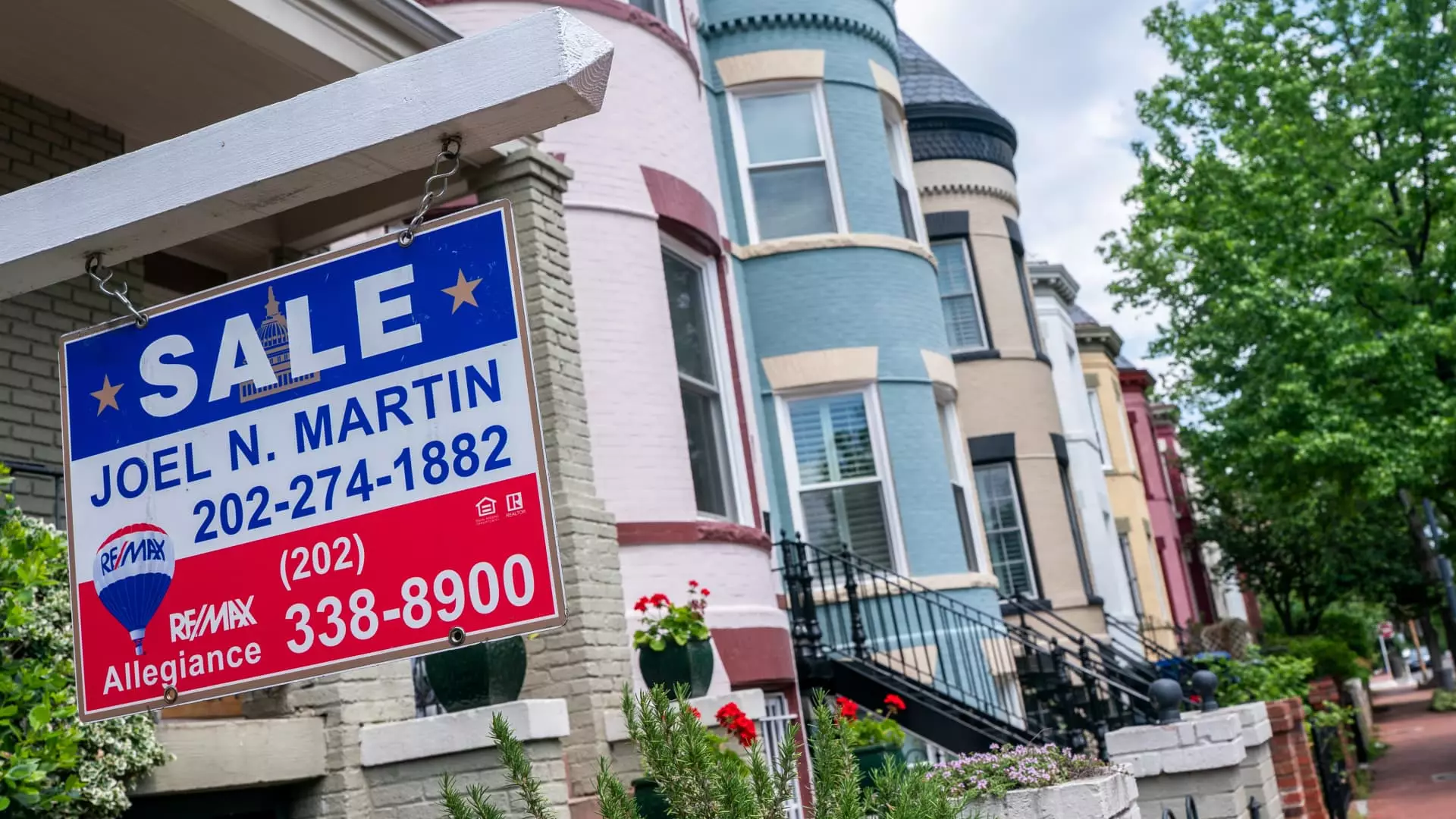As the spring season arrives, the housing market seems caught in a vicious cycle of hesitation. With soaring interest rates and an undeniable dip in consumer confidence, the vibrancy typically associated with this time of year remains absent. The National Association of Realtors reports a discouraging 0.5% decline in sales of previously owned homes from March to April, marking the slowest April response since 2009. This figure translates to an annualized rate of just 4 million units, showing a 2% decrease compared to the previous year. This unfortunate trend underscores a stark reality: economists had hoped for a modest growth of 2.7%. Instead, the market continues to sway in uncertainty as the benchmark for progress slips further away.
Pent-Up Demand on the Sidelines
Despite seven million jobs being added to the economy, home sales remain perilously close to just 75% of pre-pandemic activity. Lawrence Yun, the chief economist for NAR, poignantly expresses the situation, articulating a landscape where pent-up demand is palpable yet unrealized. Homebuyers, particularly first-time purchasers, find themselves languishing in a realm of high borrowing costs, which dampen their enthusiasm and capacity to make a move. It’s a harsh reality that aspiration collides with economic limitations. The hope that a decrease in mortgage rates could unleash this stagnation feels almost like a cruel joke, particularly for those yearning for a foothold in the property market.
Inventory: A Double-Edged Sword
While inventory levels took an upward turn—rising 9% month-over-month to settle at 1.45 million homes available—this swing is not without its irony. Though the increased supply gives buyers more choices, it simultaneously reflects a market grappling with slow sales. At a 4.4-month supply level, we stand at the highest inventory in five years, yet this is still under the six-month threshold deemed balanced. Just a year ago, a meager 3.5-month supply of housing ran rampant. The implications of such inventory fluctuations ripple through demand, pushing prices into a milder territory where consumers might finally reclaim some negotiating power due to the increased choices in homes available.
A Market in Transition
For those paying close attention to market trends, it’s clear that a transition is underway. As the median price of homes sold in April reached an impressive $414,000, a year-over-year increase of 1.8%, the rate of appreciation reflects a significant moderation. Although this rise still denotes the highest April price on record, it is coupled with a sluggish pace of growth not seen since July 2023. The South and West, traditionally hot markets, are now witnessing price declines, which reveal cracks in the facade of a once burgeoning real estate landscape.
The Reservations of Homebuyers
Interestingly, the average time homes linger on the market is 29 days, a dynamic that bears out the careful nature of today’s buyers. While this is an improvement over March, it still signifies a longer waiting period compared to last April. Notably, cancellation rates have surged to 7% in April, a sharp rise from the previous steady rate of 3% to 4%. This statistic is troubling, signaling a growing reluctance among buyers to commit in a climate thick with uncertainty. For first-time buyers—who constituted a robust 34% of sales—this hesitation is particularly acute. It’s as if potential purchasers are inherently wary, choosing to proceed with caution in the face of fluctuating market conditions.
The Divide in Luxury Markets
However, beneath this overarching narrative of stagnation, the luxury housing sector paints a contrasting picture. Homes priced above $1 million have seen nearly a 6% increase in sales from last year. Yet, even within this segment, gains are dwindling, partially attributed to unrest reflected in the stock market. The decline in lower-priced homes, specifically those priced between $100,000 and $250,000, which fell over 4%, underscores a market bifurcated along financial lines. Those capable of navigating the upper echelons of the market are finding their way, while many remain trapped in a cycle of waiting and hesitation.
The current condition of the housing market invites introspection. With buyers caught in a web of anxiety and the need for affordable options, one can only hope that conditions will shift from despondent to dynamic. Until then, the dance of selling and buying remains a timid one, teetering on the edge of uncertainty.

Leave a Reply